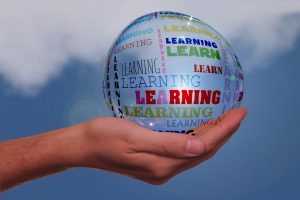Educational Access: Digital Solutions
Educational access refers to the ability of individuals to obtain and utilize educational resources and services. This includes access to quality education, learning materials, and support systems. In today’s digital age, the importance of educational access has become even more crucial. With the rapid advancement of technology, digital solutions have opened up new possibilities for improving educational access and bridging the education gap among individuals from varying backgrounds.
In this article, we will discuss the various ways in which digital solutions are being used to enhance and increase educational access, along with the benefits and challenges associated with them.
The Role of Digital Solutions in Enhancing Educational Access
Technology has revolutionized the way we access and acquire information. With the increasing use of digital solutions such as computers, tablets, and smartphones, learning has become more accessible and convenient for individuals of all ages and locations. Here are some of the ways in which digital solutions have been instrumental in enhancing educational access:
1. Online Learning Platforms
The rise of online learning platforms has made education more accessible and flexible for individuals, regardless of their geographical location or financial status. These platforms offer a wide range of courses and learning materials, allowing students to learn at their own pace and convenience. Online learning has also opened up opportunities for people who are unable to attend traditional educational institutions due to various factors. Whether it is a working professional looking to upskill or a student from a remote location, online learning platforms have made it possible for anyone to access quality education.
2. Virtual Classrooms
Virtual classrooms have become a popular digital solution for schools and universities, especially in the wake of the COVID-19 pandemic. These virtual classrooms allow students to attend classes and interact with their teachers and peers from the comfort of their own homes. This not only ensures educational access for students who are unable to attend physical classes but also provides a safe learning environment during uncertain times.
3. Open Educational Resources
Open educational resources (OERs) refer to digital materials that are available for anyone to use and share for educational purposes. These include textbooks, videos, interactive modules, and other learning materials. OERs have significantly increased the accessibility of educational resources, particularly for individuals who do not have the financial means to purchase expensive textbooks or materials. They also promote collaboration and knowledge sharing among educators and students worldwide.
The Benefits of Digital Solutions in Enhancing Educational Access
The use of digital solutions for enhancing educational access has numerous benefits, some of which are listed below:
1. Cost-Effective
Digital solutions are a cost-effective way to increase educational access. By eliminating the need for physical infrastructure and reducing administrative costs, online learning and virtual classrooms are more affordable alternatives to traditional educational methods. OERs also reduce the financial burden on students, making education more accessible to those from lower-income backgrounds.
2. Promotes Inclusivity
Digital solutions promote inclusivity by providing equal opportunities to individuals from all demographics. Whether it is a person with disabilities, a student from a rural area, or someone from a low-income family, everyone can access quality education through digital solutions. This helps in reducing the education gap and promoting educational equity.
3. Personalized Learning
Digital solutions allow for personalized learning, whereby students can learn at their own pace and according to their learning style. This is particularly beneficial for individuals who struggle with traditional teaching methods or have specific learning needs. With the help of technology, educators can design learning materials and assessments that cater to the individual needs of students, making education more accessible and effective for all.
The Challenges of Digital Solutions in Enhancing Educational Access
While digital solutions have shown tremendous potential in enhancing educational access, they also come with their own set of challenges:
1. Limited Access to Technology
Despite the increasing availability of digital solutions, there are still many individuals who do not have access to the necessary technology and internet connectivity. This means that they are unable to benefit from these digital learning methods, creating a digital divide among students.
2. Technological and Digital Literacy
In order to fully utilize digital solutions, individuals need to have a certain level of technological and digital literacy. This can be a challenge, especially for older adults or individuals from disadvantaged backgrounds who may not have had exposure to technology.
3. Quality of Online Education
While online learning platforms and virtual classrooms are convenient and accessible, the quality of education they provide may not always match that of traditional educational institutions. This can create discrepancies in the level of education received by individuals, compromising the overall impact of digital solutions on enhancing educational access.
In Conclusion
Educational access through digital solutions has the potential to revolutionize the way we learn and acquire knowledge. By overcoming barriers, promoting inclusivity and flexibility, and providing personalized learning opportunities, digital solutions can greatly enhance educational access. However, it is crucial to address the challenges associated with these solutions and ensure that everyone has equal access to quality education. Only then can we fully harness the power of digital solutions to bridge the education gap and create a more educated and knowledgeable society.








